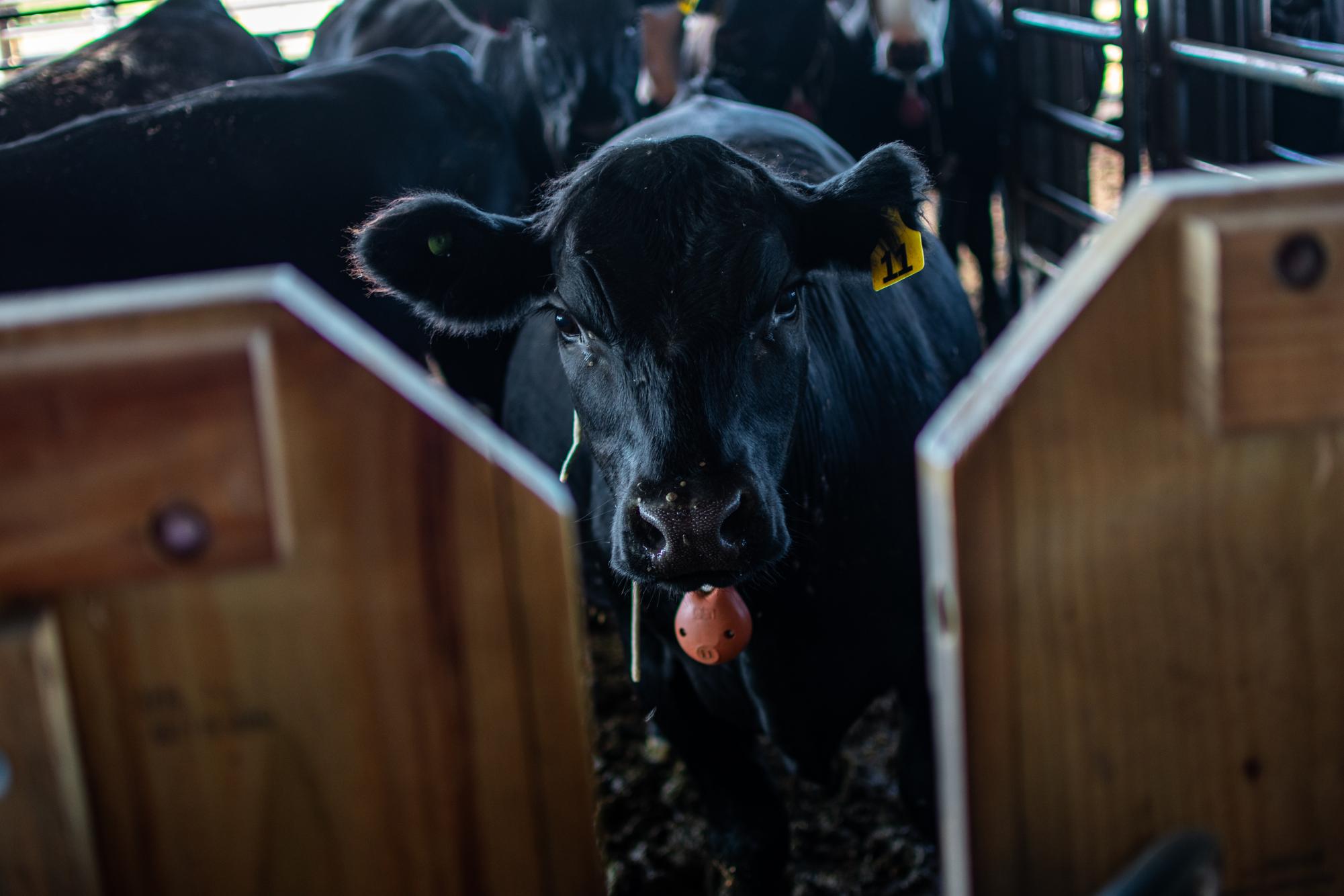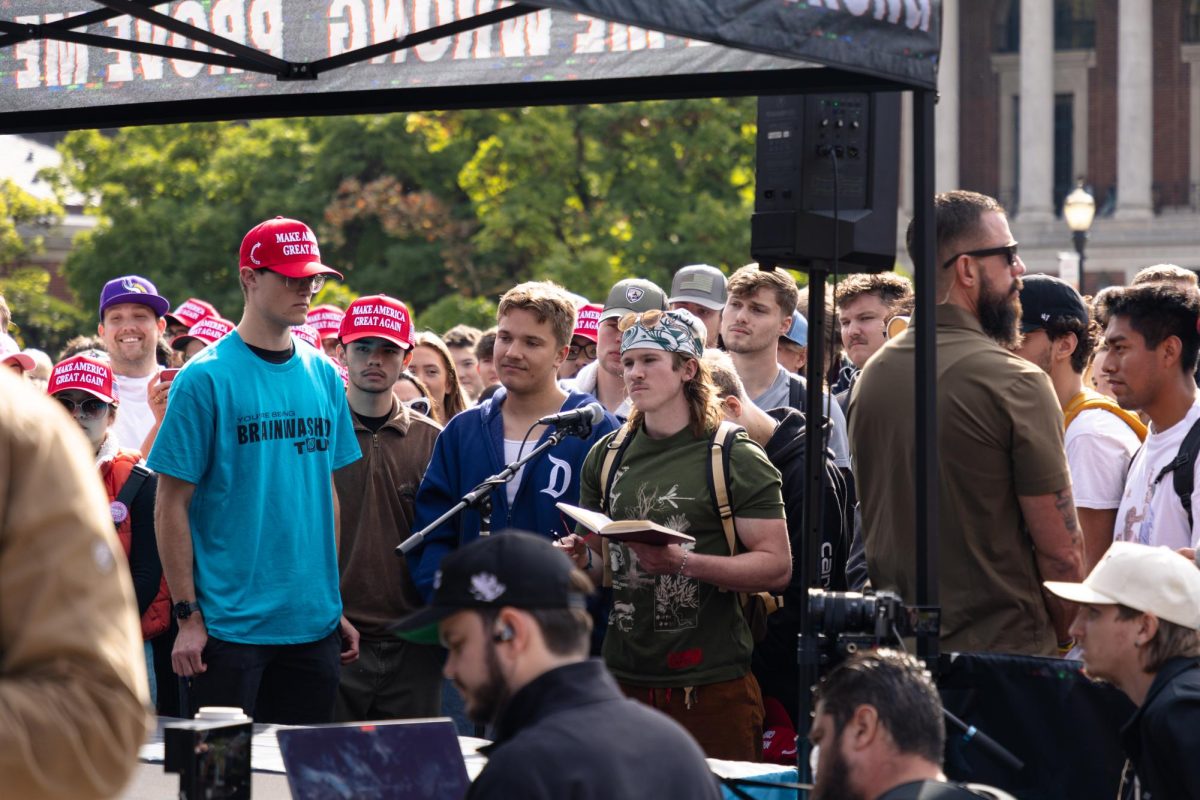Virtual fence collars are making an appearance in the ranching industry, as a new cost and labor efficient way to manage cattle and grazing areas.
“Quite a few producers are already using it in Oregon and in other states,” said Juliana Ranches, assistant professor at Oregon State University and extension beef specialist.
According to Climate Hub’s U.S. Department of Agriculture, with virtual fencing, ranchers can monitor their cattle movements and keep them within virtual fencing borders using audio and shock signals. When the cattle approach the virtual fence boundary, the collar beeps, alerting the cattle not to move any farther. If they do, consequently, they receive a low-energy electric shock.
With innovative technology, ranchers can access virtual fencing and track their cattle location from home. Collars are placed on the cattle with a GPS attached, that send signals to reception towers, which allow ranchers to monitor their cattle.
According to virtual fence manufacturer Vence, battery life lasts about 6-9 months, but often much longer. In addition, battery charge time depends on how actively ranchers manage cattle and the size of the land being managed.
Virtual fencing is not going to replace traditional barbed wire fencing used on ranches. However, it opts for a less laborious and expensive option to manage cattle on range land.
Labor costs can be reduced by up to 25% compared to manmade fencing. In addition, there is a 30% cost reduction through rotational grazing, according to Vence.
Collars are only provided on lease from Vence at around $40 per collar per year, said Chad Boyd, rangeland ecologist and research leader for the United States Department of Agriculture and Agricultural Research Service in Burns, Oregon.
“The reason you lease them is because the technology is changing so fast,” Boyd said. “It’s a better deal to lease a collar than to buy a collar, and have that collar be obsolete two or three years from now.”
According to Ambrook Research, one of the imperfections of virtual fencing is that it does not deter predators from coming inside the paddocks. However, without a physical fence in the way, cattle can flee a predator more easily.
Challenges of using the product include the producer learning how to set up the software. With virtual fencing, producers need to understand how to set up the paddocks, exclusions, and identification for their cattle, according to South Dakota State University Extension.
According to Vence, paddocks and exclusions can be set up using the Vence smartphone or web app.
“The advantage with virtual fencing is that you can put a fence almost anywhere,” Boyd said. In addition, ranchers can incorporate water locations to avoid the cost of additional infrastructure, according to SDSU Extension.
Virtual fencing also has ecological benefits. According to Climate Hub’s U.S. Department of Agriculture, virtual fencing allows for efficient rotational grazing, which can help prevent soil erosion and grassland degradation from overgrazing.
Considering the novelty of the product, concerns about the welfare of cattle have been brought up amongst the ranching community.
“What we’re seeing with research is that cattle relied on the audio instead of the shock,” Ranches said. “So in most of our studies so far, within a few days, we see that animals receive less than a shock a day – that’s very minimal.”
In a study that Ranches helped conduct, blood markers were taken from the cattle to measure stress and inflammation. Afterwards, cattle were given a five-day adjustment period with the collars. The results showed little change in stress levels compared to cattle having no collars.
“Although they were receiving the cues, it was not enough to modify their physiology or be extremely stressful to them,” Ranches said.
Studies are currently being conducted on the effect that virtual fencing has as a climate adaptation strategy. With sagebrush rangelands in Western US, ranchers can have cattle graze on grass fuels to create fuel breaks, according to OSU.
Boyd notes that fuel breaks are not necessarily a location where fires are going to stop. More realistically, fuel breaks are areas where firefighters can place their equipment to suppress a wildfire.
“If you take out the grasses, you reduce the fire continuity and make it difficult for that fire to travel across the sagebrush and bunchgrass-dominated landscape,” Boyd said. “The idea behind using virtual fencing is to reduce what we call the fine fuels or grass fuels.”
According to OSU, the expansion of non-native grasses across sagebrush landscapes increases fuel for fires. With virtual fencing, cows can help with wildfire mitigation by simply doing what they do best: grazing on grasses.











































































































